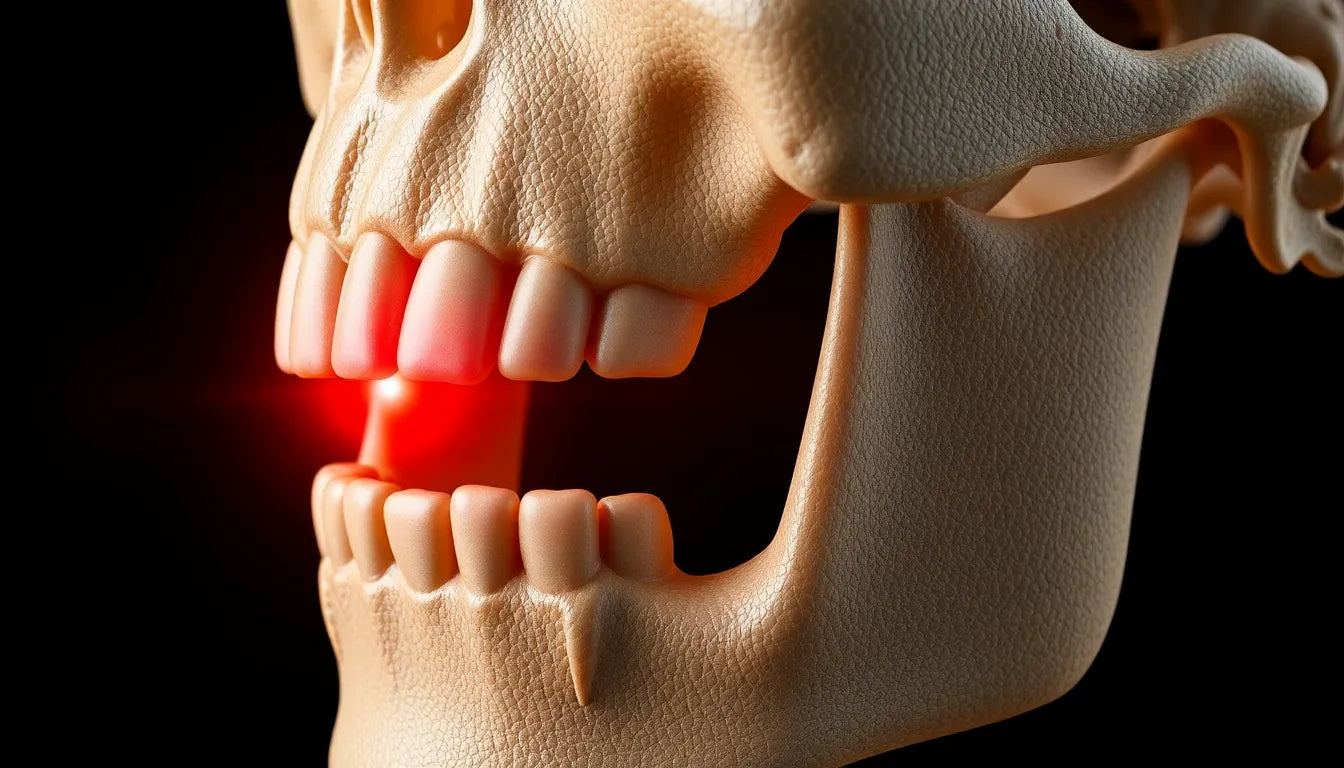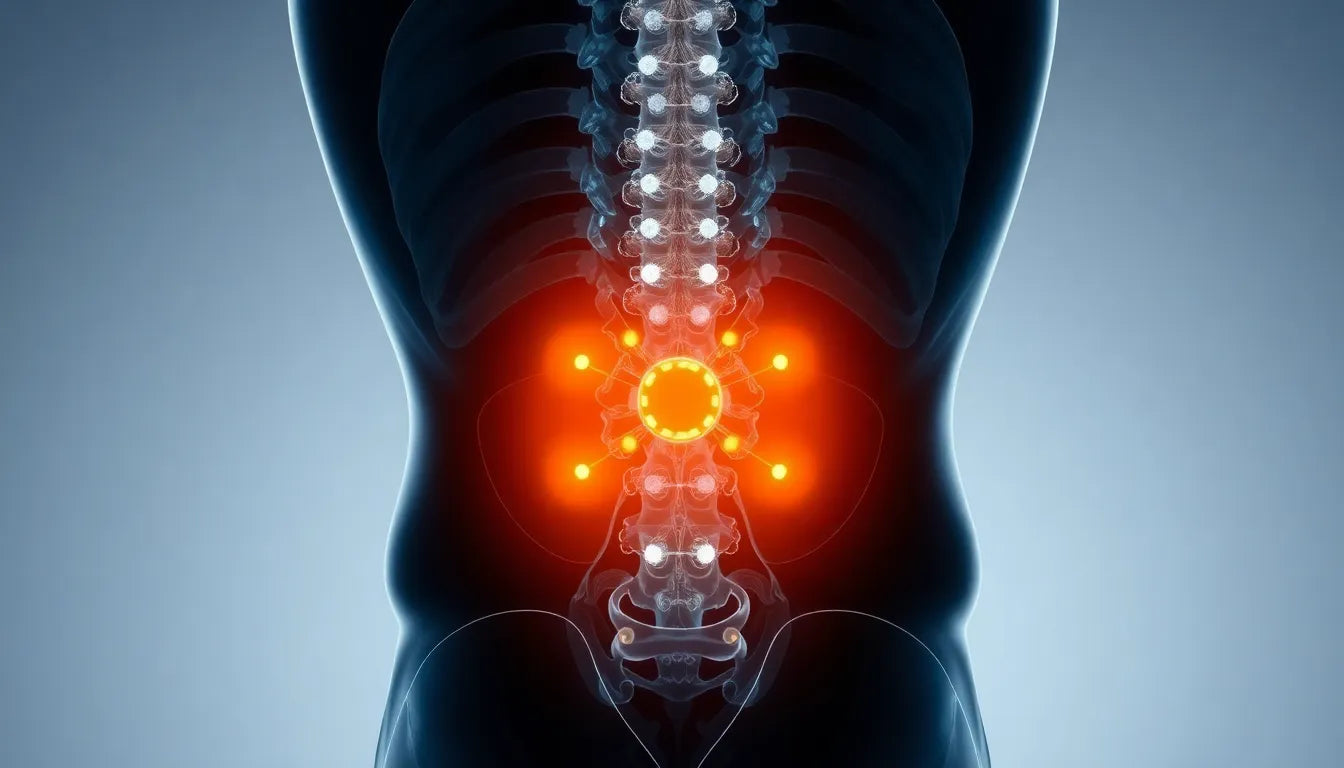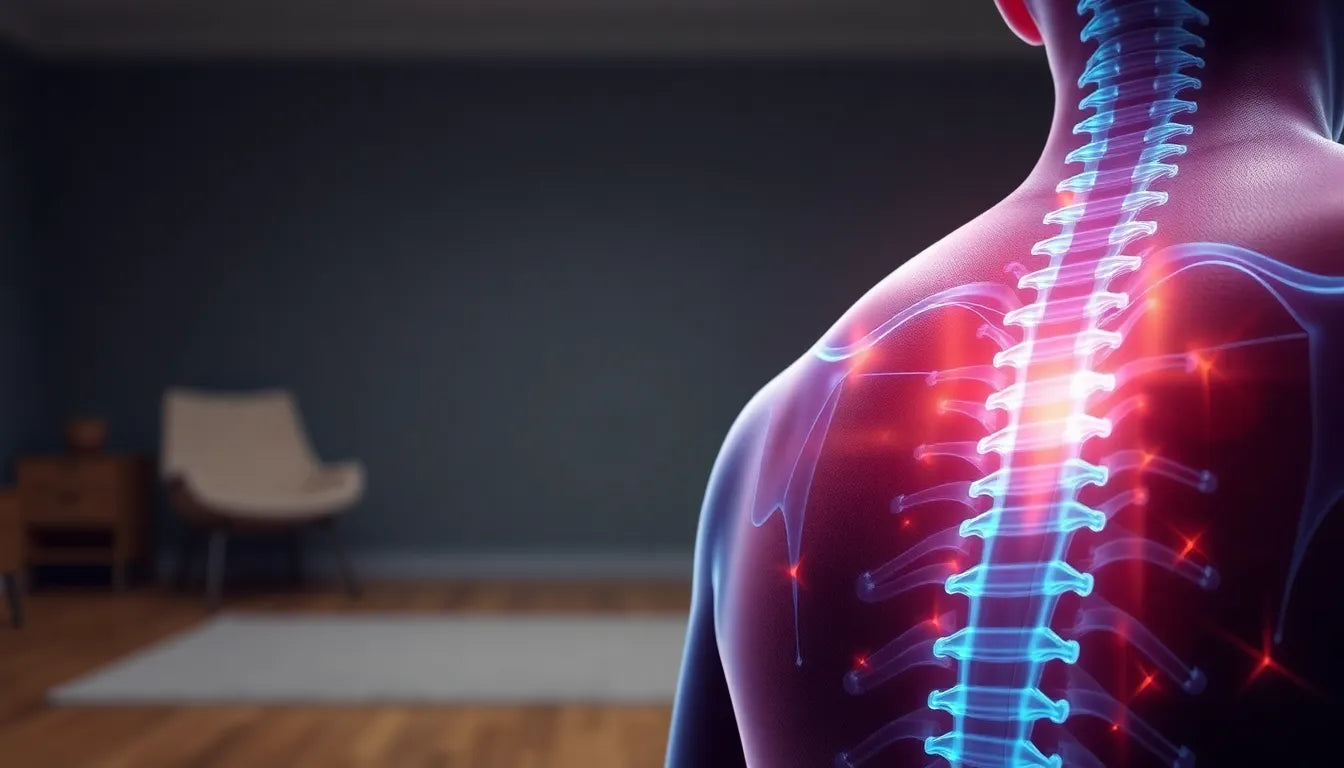A herniated disc in the jaw might sound unusual, but it’s a condition that can significantly impact daily life. While most people associate herniated discs with spinal issues, the temporomandibular joint (TMJ) in the jaw is also susceptible to disc displacement. This condition can lead to discomfort and hinder your ability to perform simple tasks like eating and speaking.
Understanding TMJ disorders and their connection to jaw disc displacement
The TMJ acts as a sliding hinge connecting your jawbone to your skull, facilitating movements necessary for chewing and speaking. Imagine it as a well-oiled machine where every component must work in harmony. The disc within the joint plays a crucial role, acting as a cushion to ensure smooth, pain-free motion. When this disc becomes displaced or herniated, it disrupts the joint's function, leading to what is commonly referred to as a TMJ disorder.
TMJ disorders encompass a variety of conditions affecting the jaw joint and surrounding muscles. When the disc is out of place, it can cause symptoms such as jaw pain, clicking or popping sounds, and even "locking" of the jaw. Understanding this connection is key to recognizing and addressing the issue early on.
The importance of early awareness
Recognizing the signs of a herniated disc in the jaw is crucial for effective management and prevention of further complications. Early awareness allows for timely intervention, which can alleviate discomfort and prevent the progression of symptoms. Many people dismiss early signs as minor annoyances, but understanding the potential impact on your quality of life can motivate you to seek professional advice sooner rather than later.
By being informed about TMJ disorders and the possibility of disc displacement, you can take proactive steps to manage your symptoms and maintain your well-being. Whether it's through lifestyle adjustments, therapeutic exercises, or consulting with a healthcare professional, early action is the key to unlocking relief and restoring function to your jaw.
terminology and definitions related to jaw disc displacement
When discussing a herniated disc in the jaw, several terms often emerge, each reflecting subtle nuances in the condition. These include herniated disc, slipped disc, displaced disc, and TMJ disc displacement. Understanding these terms can help clarify the nature of the condition and the specific issues it presents.
| Term | Definition | Key Characteristics |
|---|---|---|
| Herniated Disc | A condition where the disc protrudes out of its normal position. | Often causes pain and restricted movement. |
| Slipped Disc | Another term for herniated disc, indicating displacement. | Used interchangeably with herniated disc. |
| Displaced Disc | The disc is out of its usual alignment within the joint. | May lead to clicking sounds and jaw locking. |
| TMJ Disc Displacement | Specific to the temporomandibular joint, indicating disc misalignment. | Commonly associated with TMJ disorders. |
causes and symptoms of disc displacement in the jaw
Disc displacement in the jaw can arise from various causes, each contributing to the disruption of normal joint function. Common causes include:
- Trauma: Direct injury to the jaw can displace the disc.
- Arthritis: Degenerative changes can affect the joint's integrity.
- Chronic Teeth Grinding: Continuous pressure on the jaw can lead to displacement.
Recognizing the symptoms of a herniated disc in the jaw is crucial for timely intervention. Key symptoms include:
- Jaw Pain or Discomfort: Persistent pain in the jaw area.
- Clicking or Popping Noises: Sounds that occur when opening or closing the mouth.
- "Locking" of the Jaw: Difficulty in moving the jaw freely.
- Headaches and Ear Pain: Pain radiating to the head and ears.
- Difficulty Chewing and Limited Mouth Motion: Challenges in performing basic oral functions.
diagnosing TMJ disorders and disc displacement
Accurate diagnosis of TMJ disorders, including disc displacement, is essential for effective treatment. Healthcare professionals employ a range of methods to diagnose these conditions:
- Physical Examinations: Assessing jaw movement and identifying symptoms.
- Imaging Tests: Techniques like MRI or X-rays provide detailed views of the joint structure.
Professional evaluation is vital to distinguish between different types of TMJ disorders and to develop an appropriate treatment plan. A comprehensive diagnosis can help determine the severity of the condition and guide the choice of treatment, whether conservative or surgical.
Understanding the complexities of a herniated disc in the jaw, from terminology to symptoms and diagnosis, equips individuals with the knowledge needed to seek timely and effective care. By recognizing the signs early and consulting with healthcare professionals, those affected can take proactive steps towards managing their condition and improving their quality of life.
Exploring treatment options for a herniated disc in the jaw
When managing a herniated disc in the jaw, a range of treatment options is available, from conservative approaches to surgical interventions, depending on the severity of the condition. Understanding these options can help individuals make informed decisions about their care.
Conservative treatments
For many, conservative treatments are the first line of defense. These include pain management strategies such as analgesics to alleviate discomfort, as well as hot and cold therapy to reduce inflammation and pain. Stress reduction techniques, including relaxation exercises and mindfulness, can also play a crucial role in managing symptoms.
Physical therapy
Physical therapy offers targeted exercises and modalities to improve jaw function and alleviate pain. Techniques like ultrasound therapy, myofascial release, and joint mobilization are commonly used to enhance mobility and reduce tension in the jaw muscles. These therapies aim to restore normal function and prevent further injury.
Oral appliances
Oral appliances, such as splints or mouthguards, can be effective in alleviating symptoms associated with a herniated disc in the jaw. These devices help reposition the jaw, reducing strain on the TMJ and providing relief from pain and discomfort. They are often custom-made to ensure a proper fit and maximum effectiveness.
Surgical interventions
In cases where conservative treatments are insufficient, surgical interventions may be considered. Surgery is typically reserved for severe cases where the disc displacement significantly impairs jaw function. Procedures can range from minimally invasive arthroscopy to more extensive open-joint surgery, depending on the specific needs of the patient.
Self-care and prevention strategies
In addition to professional treatments, self-care practices can play a vital role in managing symptoms and preventing further issues. Maintaining good posture, practicing jaw exercises, and using ergonomic aids are effective strategies for reducing strain on the jaw. Anodyne's expertise in ergonomic solutions can provide valuable support in this area, helping individuals maintain proper alignment and prevent TMJ disorders.
Ergonomics is crucial in preventing jaw disc issues, as poor posture can exacerbate TMJ problems. Simple adjustments, such as using a supportive chair or adjusting computer monitors to eye level, can make a significant difference in daily comfort and jaw health.
Comparative analysis of treatment options
When considering treatment options, understanding the potential success rates and benefits of each approach is essential. Conservative treatments and physical therapy generally have high success rates for mild to moderate cases, with many individuals experiencing significant relief. Oral appliances are also effective for managing symptoms, particularly in those who grind their teeth or experience nighttime jaw clenching.
Surgical interventions, while more invasive, can provide substantial relief for those with severe disc displacement. However, they come with higher risks and longer recovery times, making it crucial to weigh the potential benefits against these factors.
Conclusion
A herniated disc in the jaw can be a challenging condition, but with the right treatment approach, relief is achievable. From conservative methods to surgical options, understanding the available treatments and seeking professional advice is key to developing a personalized care plan. By incorporating self-care strategies and ergonomic solutions, individuals can manage symptoms effectively and improve their quality of life.
Frequently Asked Questions
What is a herniated disc in the jaw?
A herniated disc in the jaw refers to the displacement of the disc within the temporomandibular joint (TMJ), which can cause pain, clicking sounds, and restricted jaw movement.
How can I tell if I have a displaced disc in my jaw?
Common symptoms of a displaced disc in the jaw include jaw pain, clicking or popping noises, jaw locking, headaches, and difficulty chewing. A professional evaluation is recommended for an accurate diagnosis.
Are there non-surgical treatments for TMJ disorders?
Yes, non-surgical treatments include pain management, physical therapy, and the use of oral appliances such as splints or mouthguards to alleviate symptoms.
How long does recovery typically take for jaw disc displacement?
Recovery time varies depending on the severity of the condition and the treatment approach. Conservative treatments and physical therapy may lead to improvement within weeks to months, while surgical recovery may take longer.
Can lifestyle changes help manage or prevent TMJ disorders?
Yes, lifestyle changes such as maintaining good posture, practicing jaw exercises, and using ergonomic aids can help manage symptoms and prevent TMJ disorders. Anodyne's ergonomic solutions can offer additional support in maintaining proper alignment.
Sources
- Mayo Clinic. "Herniated Disk."
- Johns Hopkins Medicine. "Temporomandibular Joint Disorders (TMJ)."
- Merck Manuals. "Internal Temporomandibular Joint Derangement."
- Dr. Larry Wolford. "TMJ Disorders."
- MyChiro. "TMJ Treatment Options."
- The TMJ Association. "Understanding TMJ."
- Physiopedia. "Temporomandibular Joint Dysfunction."


















